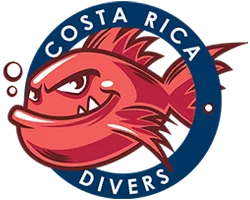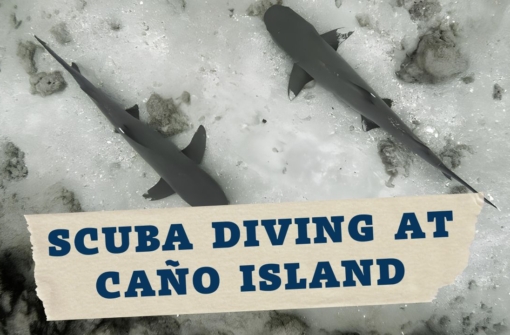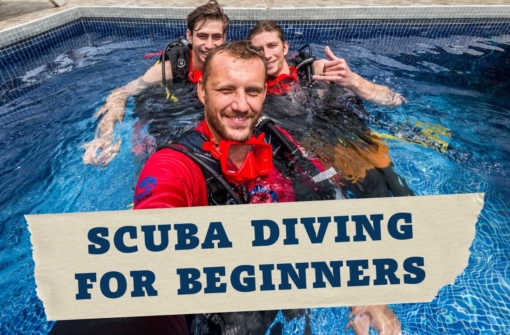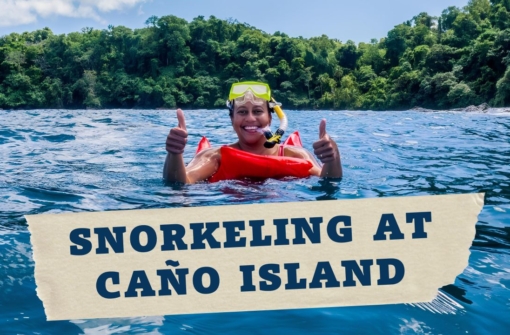Isla del Caño is a captivating tropical island located off the west coast of Costa Rica. This small, verdant island is a must-visit destination for anyone exploring Costa Rica. Not only is Isla del Caño a biological reserve, but it also holds intriguing archaeological significance, leaving visitors with more questions than answers. Today, I will provide you with essential information about this enchanting island.
The entire area of the island, including the surrounding waters, is meticulously protected. In 1978, a Biological Reserve was established to safeguard this significant part of Costa Rica’s natural and indigenous heritage. The strict protection measures ensure the preservation of the island’s ecological integrity. As you contemplate a trip to Isla del Caño, this article will serve as a valuable resource to enhance your visit.
Table of Contents
This magical island is considered the ultimate gem among Costa Rica’s tourist attractions. It captivates not only diving and snorkeling enthusiasts but also those intrigued by the island’s enigmatic history and the discovered remnants of our ancestors. If you are currently contemplating a visit to this island, rest assured that this write-up will provide you with comprehensive information about Caño Island Biological Reserve on a silver platter.
You will learn about the island’s history, its location, available transportation options, and the array of attractions it offers. So, shall we delve into the details? Let’s embark on a journey through the captivating Isla del Cano, exploring its rich history, uncovering its hidden treasures, and discovering the allure that awaits you on this remarkable island.

Isla del Caño is situated in the province of Puntarenas, Costa Rica, near the Osa Peninsula. It is believed to have formed approximately 40-50 million years ago as a result of tectonic plate movements. During these geological processes, the Caribbean Plate moved over the Cocos Plate, giving rise to this small yet incredibly unique island. With a total area of only 3.26 km², its highest point reaches 123 meters above sea level. The island’s shoreline features a mix of rocky areas and sandy beaches. One of these beaches serves as a checkpoint for park rangers who ensure the island’s safety.
The underwater realm surrounding Isla del Caño is also part of the protected area. Exploring the island’s waters is a true delight, as it encompasses an expansive area of 5,800 hectares. These waters boast some of the most diverse and well-preserved coral reef formations along Costa Rica’s Pacific coast. Additionally, there are five distinct coral platforms in the vicinity. Regrettably, the coral around the island suffered significant damage in 1982-83 due to the warming of ocean waters caused by the influence of the “El Niño” ocean current.
If you would like to see exactly where Caño Island Biological Reserve is located on a map, below are the exact coordinates that you can enter into your navigation or Google maps.
Latitude in degrees, minutes and seconds: 8 ° 44 ’00 “N
Longitude in degrees, minutes and seconds: 83 ° 53 ’00 “W
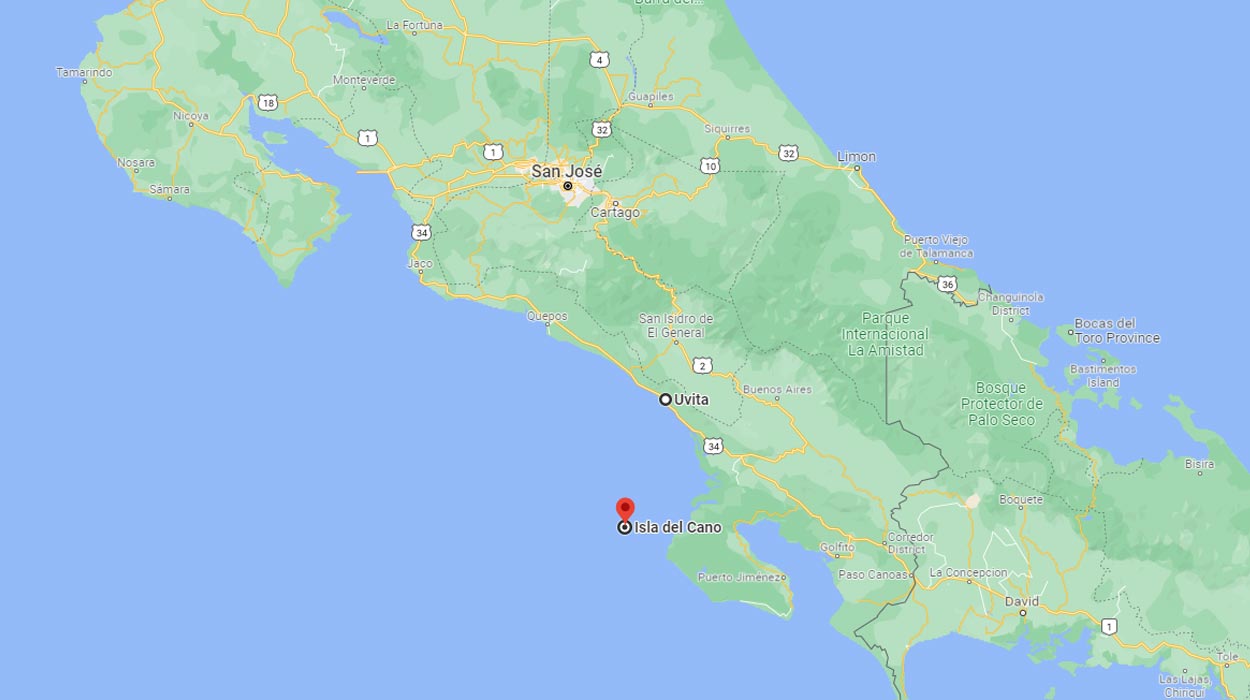
Isla del Caño was officially “discovered” in 1519 by Captain Juan de Castañeda during his exploration of the Nicoya Bay area. For archaeologists, the island holds special significance as it provides valuable evidence of Costa Rica’s history. Numerous artifacts indicating human presence in pre-Columbian times have been unearthed on the island. Archaeological studies have revealed the existence of a cemetery on the island dating back to the 700s and 1500s BC. However, the most intriguing discoveries are the enigmatic stone spheres, which have become an iconic part of Costa Rican history.
These stone spheres, made from stone with remarkably precise shapes, reach diameters of up to 2.5 meters. The mystery surrounding them lies in the unanswered questions of their purpose and the methods used to create them. Despite numerous hypotheses, we still lack definitive answers. Adding to the enigma, these multi-ton stone spheres were transported from the mainland—a task that even with modern tools and equipment would be challenging. How our ancestors accomplished this feat with primitive tools and wooden boats remains a captivating puzzle.
Additionally, Isla del Caño served as a trading post for ships passing through the region. Excavations have uncovered remnants of pottery and intricately carved stone artifacts, leading archaeologists to believe that indigenous cultures utilized the island as a crucial trading hub along the Pacific coast.

The island of Isla del Caño is predominantly covered with tropical forests, as well as secondary stands of various ages. Within the park, a total of 158 different plant species have been identified, offering a rich and diverse botanical landscape. Among these species, you can encounter a variety of trees such as banana trees, orange trees, mango trees, as well as lush ferns that contribute to the island’s verdant beauty.
Isla del Caño is home to impressive trees that can reach heights of up to 50 meters. Among the fascinating tree species found on the island is the milk tree, also known as “palo de vaca” in Spanish. This tree derives its name from the white sap obtained from it, which resembles milk. The sap, often referred to as milkweed, was historically used by indigenous communities in Central and South America as a substitute for cow’s milk. It is worth noting that the sap contains around 7% protein, making it a potential food source.
What’s interesting is that the taste of the sap can vary, ranging from sweet to bitter. In addition to the milk tree, Isla del Caño boasts other distinctive plant species, including orchids, wild cacao, and figs. These diverse flora contribute to the island’s natural beauty and ecological richness.
While the fauna on the island may not be as abundant as in some other regions, the island is still home to several interesting species. Among the wildlife you may encounter on the island are boa snakes, foxes, frigatebirds, bats, frogs, and eagles. These diverse creatures contribute to the ecological balance of the island’s ecosystem.
In the coastal waters surrounding Isla del Caño, you can find the impressive Mahi-Mahi fish, also known as Dorado. These fish are known for their vibrant colors and acrobatic displays. They are a popular catch for sport fishermen in the area. Additionally, angelfish are another notable species found in the waters near the island. With their striking appearance and graceful movements, they add beauty to the marine environment. While the fauna may not be as extensive as on the mainland, the presence of these unique species adds to the allure and biodiversity of this Biological Reserve.

The natural beauty and cultural heritage of Isla del Caño faced a serious threat in the 1970s when the Costa Rican government leased the entire island to a private company with the intention of creating an exclusive resort. This plan raised concerns among conservationists and biologists who recognized the ecological value of the island.
In response, the Costa Rican Association of Biologists launched a campaign to prevent construction on the island and protect its natural resources. Their efforts were successful, leading to the incorporation of Isla del Caño into Corcovado National Park in 1976. Two years later, the Cano Island Biological Reserve was established as a separate protected area.
Thanks to the actions taken by the conservationists, the plans for a resort were halted, and the island was preserved for its ecological significance and cultural heritage. Today, Caño Island Biological Reserve remains a protected area, allowing visitors to appreciate its pristine natural environment and explore its archaeological wonders, free from the impacts of commercial development.
Isla del Caño, located on the Pacific coast of Costa Rica, experiences two distinct seasons. The dry and warm season begins in December and extends until April. This period attracts the most tourist activity and offers optimal conditions for diving. The weather is generally dry, and temperatures are warm, creating a favorable environment for outdoor activities. From May onwards, the rainy season sets in and continues through the fall. However, it’s important to note that this doesn’t imply continuous rainfall. Many travelers actually consider the rainy season to be a great time to visit Costa Rica. The temperatures are slightly cooler, and the frequent rain showers contribute to lush vegetation growth.
The national parks, including Isla del Caño, transform into vibrant green landscapes during this time, resembling an “ocean of green.” While underwater visibility may decrease slightly during the rainy season, diving and snorkeling can still be highly enjoyable. Additionally, September marks the arrival of whales in Costa Rica as they undertake their annual migration. This presents a wonderful opportunity to witness these majestic creatures in their natural habitat.
Whether you choose to visit during the dry season for optimal diving conditions or during the rainy season to experience the lush beauty of Costa Rica, Isla del Caño offers captivating natural wonders and memorable experiences throughout the year.
Visiting this magnificent tropical island is an exceptional experience and highly recommended. Rest assured, you won’t encounter large crowds of tourists as the island has a limited capacity. Dedicated park rangers diligently enforce the regulations to maintain order and preserve the island’s pristine environment. To secure your spot, it is advisable to make advance reservations for your trip. Now, let’s delve into the array of enticing attractions and activities available on the island:
Costa Rica offers an excellent opportunity for beginners to embark on an incredible scuba diving adventure. With its warm ocean waters and diverse marine life, it serves as the perfect starting point for your underwater exploration. Rest assured, your scuba diving experience in Costa Rica will be a cherished memory of your trip.
Taking the plunge is as simple as making the decision to dive into the water. You have several options to choose from, but the recommended approach is to enroll in a basic scuba diving course. Upon completion, you will be granted a diver’s license, allowing you to explore dive sites worldwide. Alternatively, you can opt for a try dive, a guided one-day experience led by an instructor, which serves as a great way to assess your interest in scuba diving.
When it comes to diving in Costa Rica, Isla del Caño stands as the premier choice. With a variety of sites to explore, you can take advantage of the numerous benefits that diving in Costa Rica has to offer. For more detailed information on scuba diving in Costa Rica, you can refer to the Guide to Scuba Diving in Costa Rica.

Snorkeling in the shallow waters surrounding Isla del Caño is an equally popular activity that offers enjoyment for the whole family. Equipped with a mask and snorkel, you can marvel at the wonders of the underwater world. The beauty of snorkeling is that there is no age limit, making it a delightful experience for both children and older individuals.
You don’t need to venture deep underwater to witness the beauty that awaits you! Tropical fish, vibrant coral, and crystal-clear waters are all within reach during your snorkeling excursion. Even if you’re not a strong swimmer, there’s good news for you! You don’t require advanced swimming skills to partake in a snorkeling trip to Isla del Caño.
With the aid of a safety vest provided to you, you’ll stay secure in the water, while your guide ensures your well-being throughout the experience. Whenever you feel the need, you can easily return to the boat or even relax on the beach. If you’re interested in learning more about snorkeling and the equipment involved, we invite you to read our guide on snorkeling in Costa Rica.
Apart from water activities, you can also explore the island by taking a guided tour. There are well-marked trails and even a viewpoint for tourists visiting Caño Island Biological Reserve. You can immerse yourself in the natural beauty of the island, stroll along the trails, and appreciate the stunning views it offers.
For those seeking relaxation, you can simply unwind and bask in the tranquility of the beach. With ample space available, you can find a secluded spot where you can enjoy the tropical surroundings without any disturbances. This allows you to truly experience the enchantment and magic of this island getaway.

As you may already be aware, Isla del Caño is a protected area, and as such, there are certain rules that must be followed. Firstly, it is essential to have a reservation made in advance through a registered tour operator in order to access the island. Since water transportation is required to reach the island, it is not feasible to visit independently, necessitating the use of an authorized tour operator.
Furthermore, it is important to note that smoking and consuming alcohol are strictly prohibited within any protected area in Costa Rica. Therefore, it is advised not to bring these items into the park to avoid potential fines. Additionally, the use of single-use packaging, particularly plastic bottles and cups, is also prohibited in Marino Ballena and Isla del Caño. It is advisable to bring a reusable bottle instead.
Another aspect that surprises many visitors is the complete prohibition of bringing and using drones or other flying devices without special written permission from the park manager. It is therefore unnecessary to bring a drone on your trip, as its use is not permitted within the park, and you may be denied entry if found in possession of one.
If you have made the decision to visit Isla del Caño, you may be wondering about the transportation options to reach the island. Accessing the island requires boat transportation. It is recommended to book your boat in advance through a registered tour operator to ensure a smooth and organized trip to Caño Island Biological Reserve. Here are the available departure points to reach the island:
Uvita is a small tourist town situated at the entrance of Marino Ballena National Park. You have probably come across pictures of its iconic whale-shaped beach. This is the place! From Uvita, you can embark on trips to Isla del Caño, which begin within the park itself, providing an opportunity to explore two national parks in one trip.
Departures for Caño Island from Uvita usually start in the morning, around 7 o’clock, with a return scheduled for early afternoon. The boat journey to the island typically takes about an hour or even less, and along the way, you may have the chance to encounter dolphins and even whales.
Uvita offers several paid parking lots where you can securely leave your car. Additionally, there are restaurants and hotels in the area, providing convenient amenities for visitors. If you are seeking a fantastic trip to Isla del Caño from Uvita, do not hesitate to reach out to us for further information and assistance. But there are many all-inclusive resorts in Costa Rica, so you’re sure to find something for you.

Sierpe is a small village nestled along a bend of the Sierpe River, known for being home to Costa Rica’s largest mangrove forests. Embarking on a trip to Caño Island from Sierpe presents an incredible opportunity to witness the beauty of these majestic plants firsthand. The journey to Isla del Caño from Sierpe takes approximately two hours, with nearly half of that time spent meandering down the river towards the ocean.
This scenic route offers a delightful experience and allows you to admire the enchanting mangrove forests. In Sierpe, you can find several restaurants and small motels, providing options for those interested in staying overnight. While secure parking might not be available, opting for a reputable tour operator ensures the safety of your vehicle. If you’re seeking a unique and memorable adventure, consider to go to Isla del Caño from Sierpe, immersing yourself in the captivating beauty of the mangroves and the island’s wonders.
Bahía Drake, located in the northern part of the Osa Peninsula, is a small bay renowned for its connection to the legendary pirate Sir Francis Drake. According to lore, Drake supposedly hid one of his plundered treasures in this bay. Although the treasure remains undiscovered, it has not diminished the popularity of the area as a tourist destination. Hotels of various classes and prices are available in Bahía Drake, providing accommodation options to suit different preferences. Additionally, tours to Caño Island Biological Reserve from Drake’s Bay are offered, allowing visitors to explore the island’s wonders.
The journey from Drake’s Bay to Isla del Caño typically takes around an hour or less. However, access to the bay itself can be challenging, and there are primarily two ways to reach it. Many tourists opt to take a boat from Uvita, as it is a relatively quick option. By car, the journey is a full day’s drive. In reality, these three options are the main means of reaching the island, and a tour from Uvita is often considered the most convenient and efficient choice. It saves both time and money, as Uvita provides the best proximity to the island without being too far away.
You may be curious about the cost of a trip to Isla del Caño and whether it is worth the investment. If you desire to experience a tropical island reminiscent of movies while immersing yourself in the enchanting ambiance of a place significant to our ancestors, then the price becomes insignificant, and the experience is undoubtedly worthwhile. To find current prices, you can refer to this page: tour price list.
The cost of snorkeling and diving tours is generally similar across destinations, and searching for the cheapest option may not yield significant savings. However, I would like to present the advantages of our tours from Uvita, hoping to persuade you to consider them. Our strengths lie in offering small group sizes, fast boats, and being the only PADI accredited dive center in the area. Nevertheless, the ultimate decision should align with your preferences. My main objective is for you to visit the magical Caño Island Biological Reserve at least once in your lifetime.

Without a doubt, I wholeheartedly recommend a trip to Isla del Caño to anyone who has the opportunity. There should be no hesitation when it comes to the worthiness of such an experience. This island stands as one of the rare remnants of how our Earth appeared thousands of years ago. Regrettably, human activities have the power to bring about change. We cannot guarantee that future generations will witness Isla del Caño in the same pristine condition that we have the privilege of seeing today. We acknowledge our daily contributions to these changes, but at the same time, we strive to protect these precious resources. I sincerely hope that when you visit our magical island, you will appreciate its beauty and value, and join us in safeguarding it for the benefit of all.
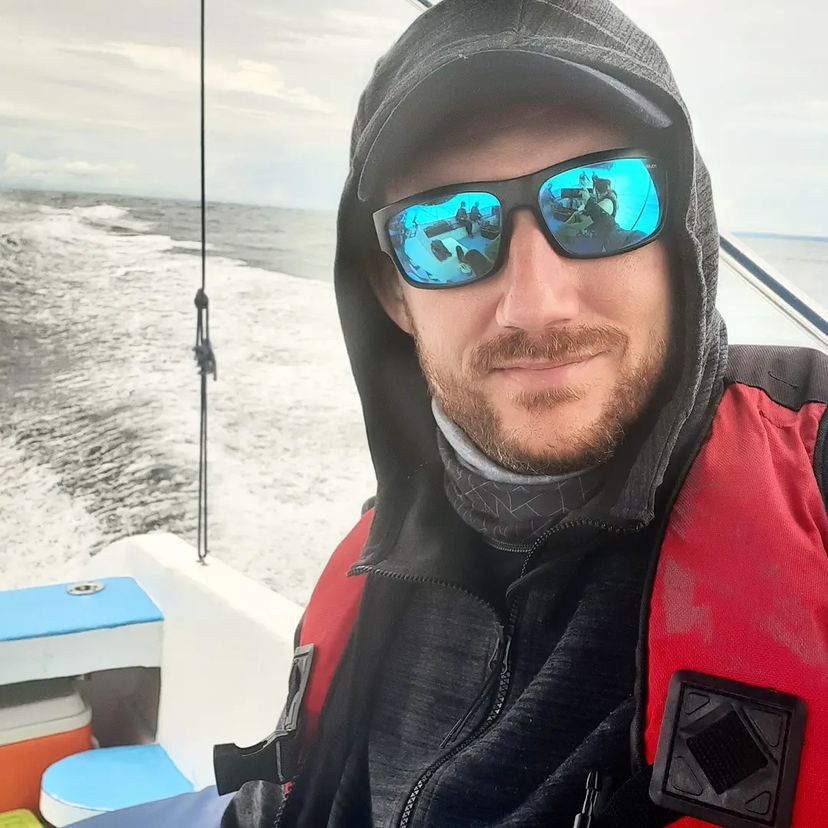
My life has always been linked to sports commonly considered extreme. I once fell in love with big wall climbing, just as I am now in love with scuba diving. I climbed mountains, explored caves and took part in exploration expeditions. Through these experiences, I saw a large chunk of the world and learned a lot. Now I have been a professional diver and a scuba instructor for many years, and Costa Rica has become my second home. Check also my expedition project: @goexplorewith.me
Do you have a good insurance?
Accidents can happen even in paradise and that sucks. That’s why it’s so important to have good insurance to keep you covered under and above the water.

